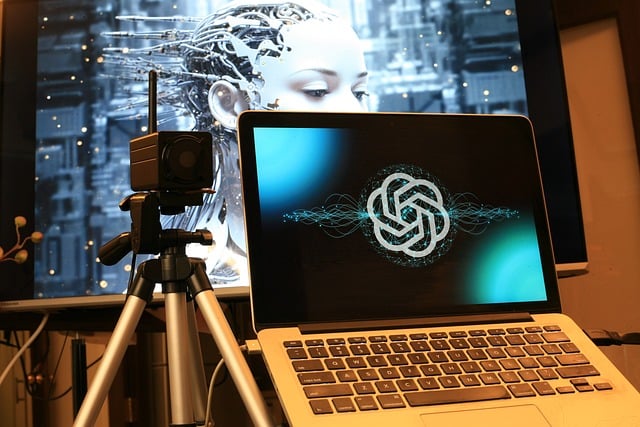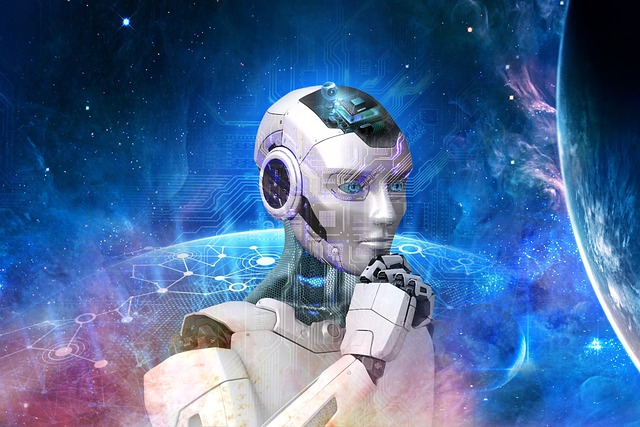
In today’s digitally-driven era, the concept of machine learning has emerged as a groundbreaking phenomenon, revolutionizing numerous aspects of our lives. Machine learning, a subset of artificial intelligence (AI), empowers computer systems to learn and improve from experience without being explicitly programmed. Through applications of machine learning, this revolutionary technology has paved the way for unprecedented advancements in various domains, offering unparalleled efficiency, accuracy, and insights.
Healthcare
In the field of healthcare, machine learning has emerged as a powerful tool, revolutionizing the way diseases are diagnosed, treated, and managed. By utilizing advanced algorithms, machines can analyze vast amounts of patient data, uncovering hidden patterns and insights that can greatly improve patient outcomes and optimize healthcare resources.
Early Disease Detection and Diagnosis
Machine learning algorithms excel in early disease detection and diagnosis, offering healthcare providers invaluable support in identifying potential health risks and initiating timely interventions. By analyzing patient data, such as medical history, lifestyle factors, and genetic information, these algorithms can detect subtle patterns and signals that may indicate the presence of a disease before noticeable symptoms arise. This enables healthcare professionals to intervene early, providing targeted treatments and potentially saving lives.
Personalized Treatment Plans
One of the key advantages of machine learning in healthcare is its ability to create personalized treatment plans tailored to each patient’s specific needs. By considering a multitude of factors, including genetics, genomics, and individual responses to treatments, machine learning algorithms can recommend the most suitable treatment options for patients. This personalized approach maximizes treatment effectiveness, minimizes adverse effects, and improves patient satisfaction.
Predictive Analytics
Machine learning algorithms also excel in predictive analytics, where they can analyze large datasets to forecast disease progression and patient outcomes. By considering various variables, such as patient demographics, medical history, and treatment responses, these algorithms can generate models that predict individual outcomes, risk factors, and treatment responses. This information empowers healthcare providers to make informed decisions, allocate resources efficiently, and optimize patient care.
Clinical Decision Support Systems
Integrating machine learning algorithms into clinical decision support systems has greatly improved healthcare professionals’ decision-making capabilities. By analyzing patient data, treatment guidelines, and best practices, these systems can assist doctors in making evidence-based decisions. This ensures that healthcare providers have access to the latest research and recommendations, reducing errors and improving patient care.
Enhanced Medical Imaging

Machine learning algorithms have significantly enhanced medical imaging technologies, enabling more accurate and efficient diagnostics. By analyzing medical images, such as X-rays, MRIs, and CT scans, these algorithms can identify abnormalities, detect tumors, and provide radiologists with additional insights. This streamlines the diagnostic process, reduces errors, and allows for faster and more precise treatment planning.
Machine Learning in Finance
Machine learning has revolutionized the finance industry, redefining the way we understand and leverage economic data. By harnessing the power of advanced algorithms, finance professionals can make more accurate predictions, detect patterns, and identify investment opportunities. From managing risks to detecting fraud, machine learning has become an indispensable tool in the world of finance.
Predictive Analytics
Machine learning algorithms analyze vast amounts of historical financial data to identify patterns and trends that can guide investment decisions. By examining market trends, economic indicators, and company performance, these algorithms can generate accurate predictions about future market behavior. This enables finance professionals to make informed investment choices, maximize returns, and minimize risks.
Risk Management
Machine learning algorithms assist financial institutions in managing and mitigating risks. By analyzing historical data and real-time market conditions, these algorithms can detect potential risks and provide risk assessment models. This helps finance professionals identify and address risks, leading to more effective risk management strategies.
Algorithmic Trading
Machine learning plays a crucial role in algorithmic trading, where computers execute trades based on predefined rules and patterns. By analyzing market data, historical prices, and other factors, machine learning algorithms identify profitable trading opportunities and execute trades with high precision and speed. This automation reduces human error, optimizes trading strategies, and improves overall trading efficiency.
Natural Language Processing
In the realm of communication and language processing, machine learning has made significant strides, transforming the way we analyze and understand human language. Natural Language Processing (NLP) algorithms, powered by machine learning, have opened up a world of possibilities in various domains such as virtual assistants, translation services, and sentiment analysis for customer feedback. Let us delve deeper into these applications:
Smart Virtual Assistants
Machine learning algorithms have enabled the creation of smart virtual assistants that can understand and respond to human language with remarkable accuracy. These digital companions, such as Siri, Alexa, and Google Assistant, utilize voice recognition algorithms and natural language understanding models to interpret user queries and provide relevant information or perform tasks.
By continuously learning from user interactions and refining their understanding, these virtual assistants can adapt to individual preferences and deliver personalized experiences.

Language Translation Services
Thanks to machine learning, language translation services have become more accurate and efficient than ever before. Machine learning algorithms analyze vast amounts of text data in different languages to identify patterns and understand the complexities of language structures. By recognizing recurrent phrases, idiomatic expressions, and grammatical rules, these algorithms can provide accurate translations in real-time. This breakthrough in translation technology has facilitated global connectivity, breaking down language barriers, and enabling seamless communication between individuals and cultures.
Sentiment Analysis
Machine learning algorithms play a crucial role in sentiment analysis, enabling businesses to gain valuable insights from customer feedback. By analyzing social media feeds, online reviews, and customer surveys, these algorithms can determine the sentiment behind each piece of text – whether it is positive, negative, or neutral. This information helps businesses gauge customer satisfaction, identify emerging trends, and make data-driven decisions to improve their products or services. Sentiment analysis powered by machine learning provides invaluable support in understanding customer preferences and enhancing the overall customer experience.
Language Generation
Machine learning algorithms have also fostered advancements in natural language generation, enabling computers to generate human-like text. By training on vast quantities of text data, these algorithms can learn grammar, style, and context. This technology has various applications, from generating personalized emails and chatbot responses to creating news articles and creative writing. The ability to generate coherent and contextually appropriate text empowers businesses to automate content creation processes, saving time and resources while maintaining a high standard of quality.
Image and Video Analysis
Machine learning algorithms have revolutionized the field of image and video analysis, unlocking incredible capabilities and transforming how we perceive and interact with visual data. By leveraging advanced techniques and neural networks, machine learning algorithms can extract meaningful information from images and videos, enabling applications such as object recognition, image classification, and video surveillance.
Object Recognition
Machine learning algorithms excel in object recognition tasks, where they can identify and locate specific objects within images or videos. By training on vast datasets, these algorithms learn to recognize patterns, shapes, and textures associated with different objects. This technology has widespread applications, ranging from autonomous vehicles identifying pedestrians and obstacles to facial recognition systems used for security and authentication purposes.
Image Classification
Machine learning algorithms can classify images into different categories based on their content. By considering features such as colors, textures, and shapes, these algorithms can assign images to pre-defined classes or labels.

This enables applications like automatic tagging of photos, content filtering, and recommendation systems. Image classification has also found applications in fields like medical imaging, where algorithms can assist in the diagnosis of diseases by analyzing medical images.
Video Surveillance
Machine learning algorithms have greatly enhanced video surveillance systems, improving their capabilities in detecting and tracking objects of interest. By analyzing video streams in real-time, these algorithms can identify suspicious behavior, detect anomalies, and generate alerts for further investigation. Video surveillance powered by machine learning has become an invaluable tool in ensuring public safety and security in various settings, such as airports, shopping malls, and smart cities.
Image Generation and Enhancement
Machine learning algorithms have the ability to generate new images and enhance the quality of existing ones. By learning from large datasets, these algorithms can generate high-resolution images, fill in missing details, and remove noise or artifacts from low-quality images. This technology has numerous applications, including image restoration, artistic style transfer, and virtual reality.
Machine Learning in Education
Machine learning has begun to have a profound impact on the field of education, transforming the way we teach, learn, and assess knowledge. By leveraging the power of algorithms and data analysis, machine learning has opened up new possibilities for personalized learning experiences, adaptive assessments, and intelligent tutoring systems. Let’s explore the applications of machine learning in education:
Personalized Learning
Machine learning algorithms can analyze vast amounts of student data, including performance, preferences, and learning styles, to create personalized learning paths for each student. By understanding individual strengths and weaknesses, these algorithms can recommend tailored resources and activities to optimize learning outcomes. Personalized learning ensures that students receive the support and materials they need to thrive and achieve their full potential.
Adaptive Assessments
Traditional assessments often follow a one-size-fits-all approach, but machine learning has introduced adaptive assessments that can dynamically adjust the difficulty level and content based on each student’s performance. By continuously analyzing responses and learning patterns, these algorithms can provide immediate feedback and adapt the assessment to match the student’s proficiency. Adaptive assessments promote deeper understanding and help identify areas for improvement.
Intelligent Tutoring Systems

Machine learning algorithms enable the development of intelligent tutoring systems that provide personalized guidance and support to students. These systems can analyze student interactions, identify misconceptions, and adapt the instructional approach accordingly. Intelligent tutoring systems act as virtual tutors, adapting to the needs of each student and providing targeted interventions to foster mastery of complex concepts.
Natural Language Processing
Machine learning algorithms play a vital role in natural language processing applications in education. They enable systems to understand and analyze student writing, providing feedback on grammar, style, and content. These algorithms can help students improve their writing skills and provide teachers with insights into individual performance, allowing for targeted instruction and support.
Learning Analytics
Machine learning algorithms in learning analytics can process large volumes of data generated by students and educational platforms, leading to insights that can inform instructional design and decision-making. By analyzing patterns and trends, these algorithms can identify areas of improvement, predict performance outcomes, and guide interventions for struggling students. Learning analytics powered by machine learning empower educators to make data-driven decisions and tailor instruction to meet the needs of each learner.
The applications of machine learning continue to expand, infiltrating diverse domains such as agriculture, energy, entertainment, and more. From precision farming techniques that optimize crop yields to energy management systems that enhance sustainability, machine learning is driving innovation across the board.
Ultimately, it is impossible to overstate the impact of machine learning on our modern world. As this increasingly influential technology continues to evolve, applications of machine learning will undoubtedly reshape industries, drive efficiency, and unlock numerous possibilities. With every passing day, machine learning propels us further into an era where the impossible becomes possible, propelling humanity to new heights of discovery and progress.
